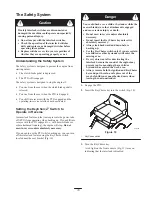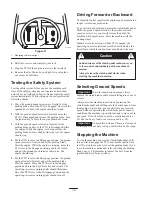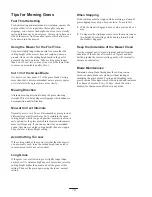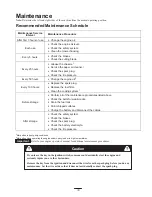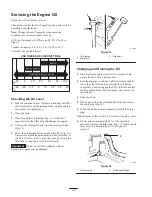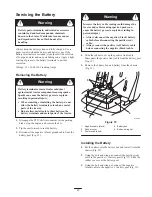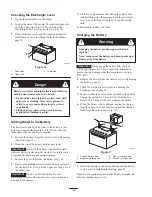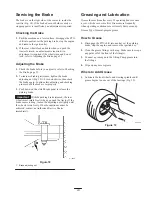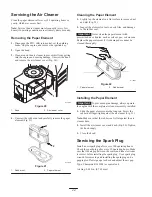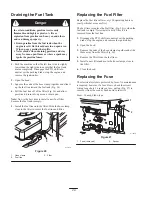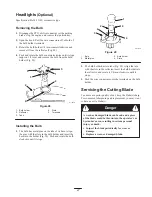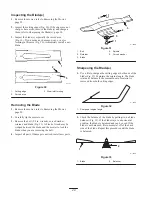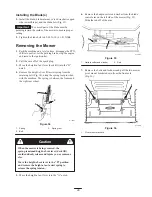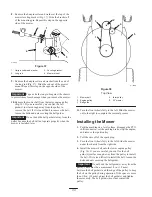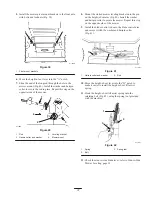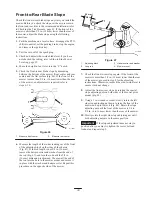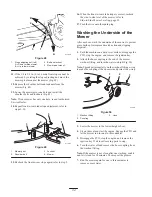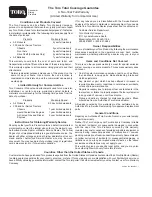
28
Inspecting the Blade(s)
1. Remove the mower; refer to Removing the Mower,
page 29.
2. Inspect the cutting edges (Fig. 30). If the edges are not
sharp or have nicks, remove the blade(s) and sharpen
them; refer to Sharpening the Blade(s), page 28.
3. Inspect the blade(s), especially the curved area
(Fig. 30). If you notice any damage, wear, or a slot
forming in this area (Fig. 30), immediately install a new
blade.
m–151
1
2
3
Figure 30
1.
Cutting edge
2.
Curved area
3.
Wear/slot forming
Removing the Blade
1. Remove the mower; refer to Removing the Mower,
page 29.
2. Carefully tip the mower over.
3. Remove the bolt (5/8 in. wrench), curved washer,
retainer, and blade (Fig. 31). A block of wood may be
wedged between the blade and the mower to lock the
blade when you are removing the bolt.
4. Inspect all parts. If damage is noticed, install new parts.
m–1886
1
2
3
4
5
Figure 31
1.
Bolt
2.
Retainer
3.
Blade
4.
Spindle
5.
Curved washer
Sharpening the Blade(s)
1. Use a file to sharpen the cutting edge at both ends of the
blade (Fig. 32). Maintain the original angle. The blade
retains its balance if the same amount of material is
removed from both cutting edges.
m–1854
1
Figure 32
1.
Sharpen at original angle
2. Check the balance of the blade by putting it on a blade
balancer (Fig. 33). If the blade stays in a horizontal
position, the blade is balanced and can be used. If the
blade is not balanced, file some metal off of the back
side of the blade. Repeat this procedure until the blade
is balanced.
m–1855
1
2
Figure 33
1.
Blade
2.
Balancer


